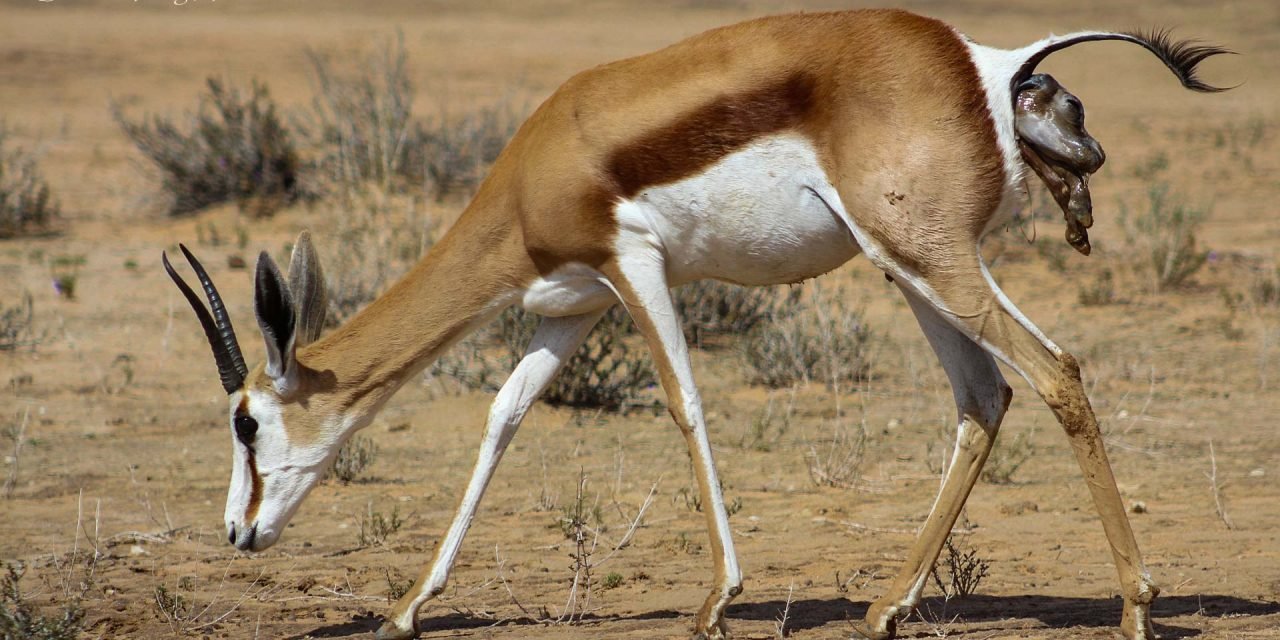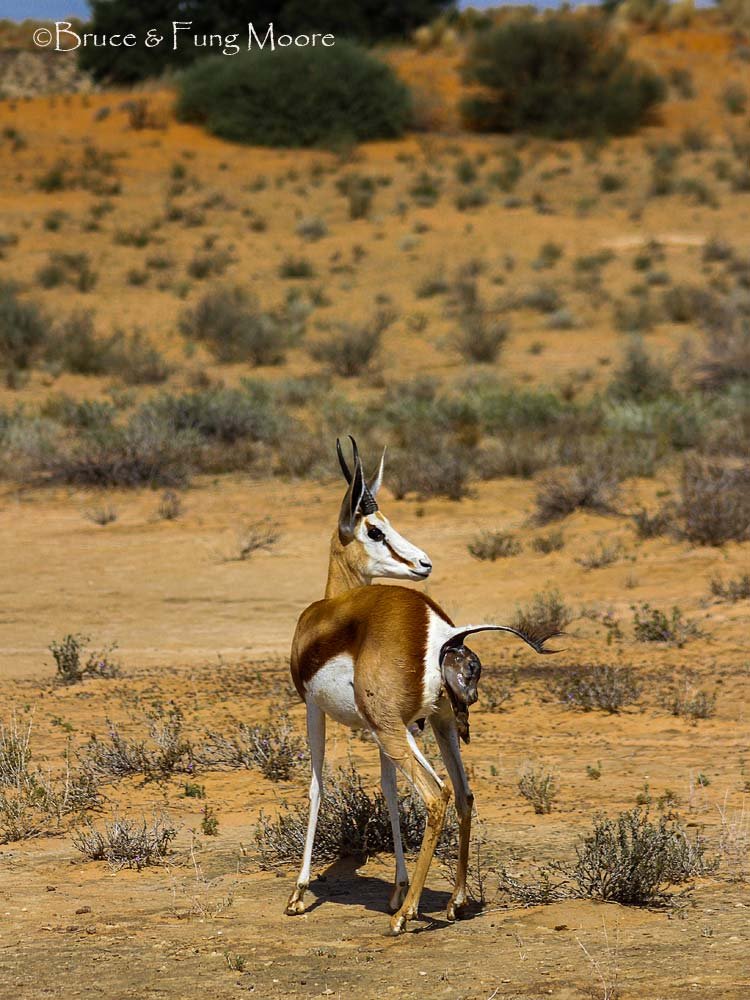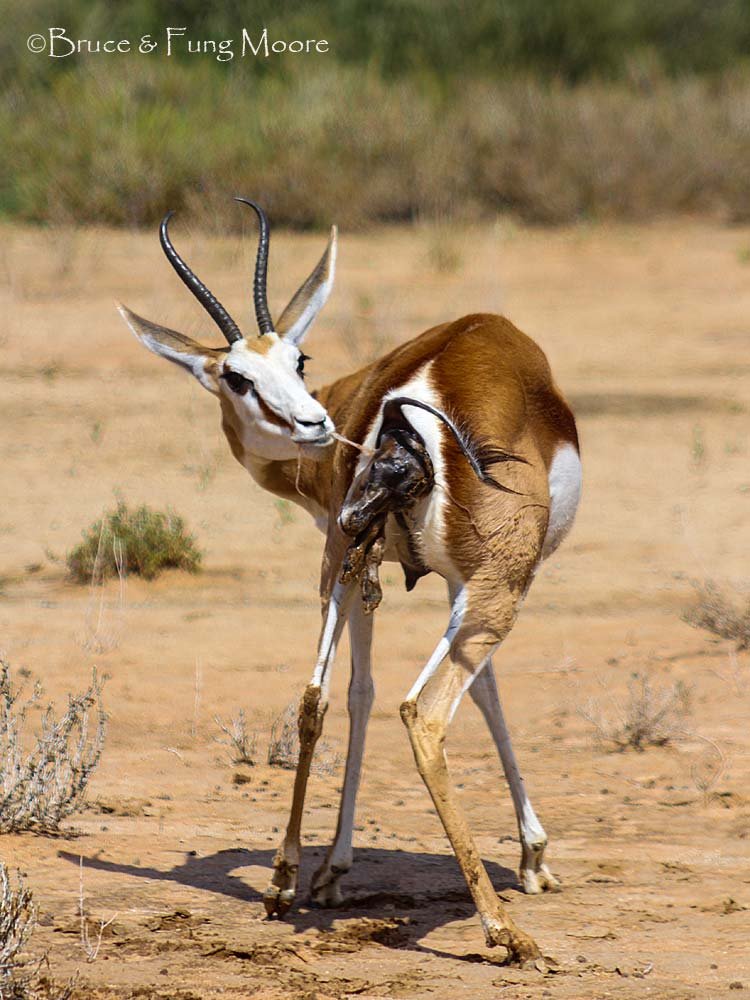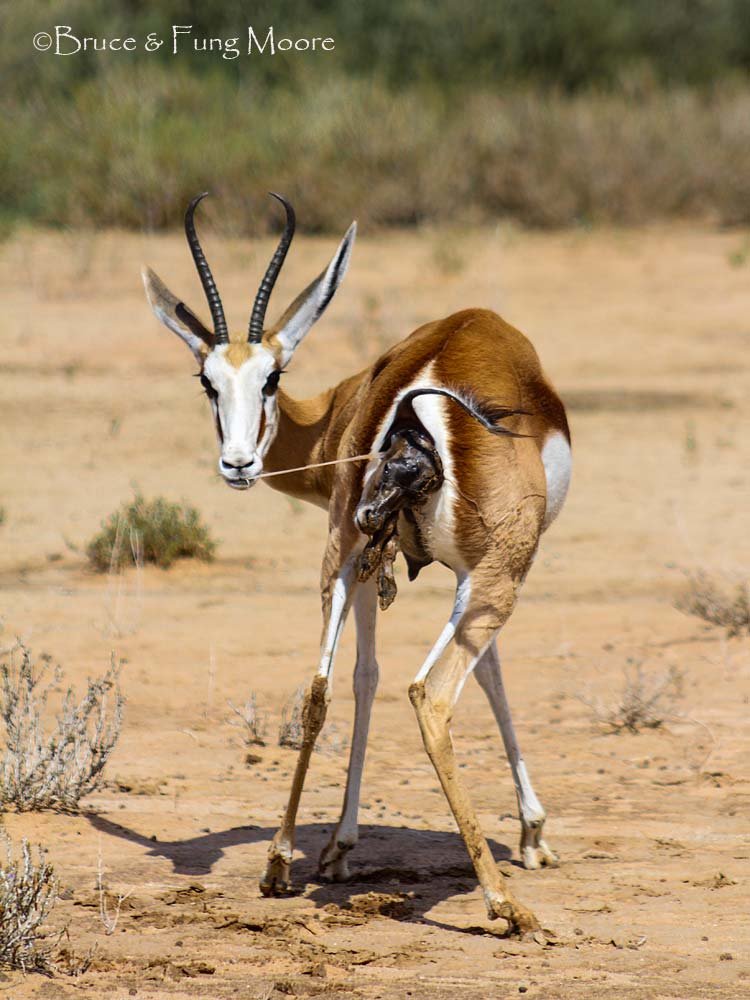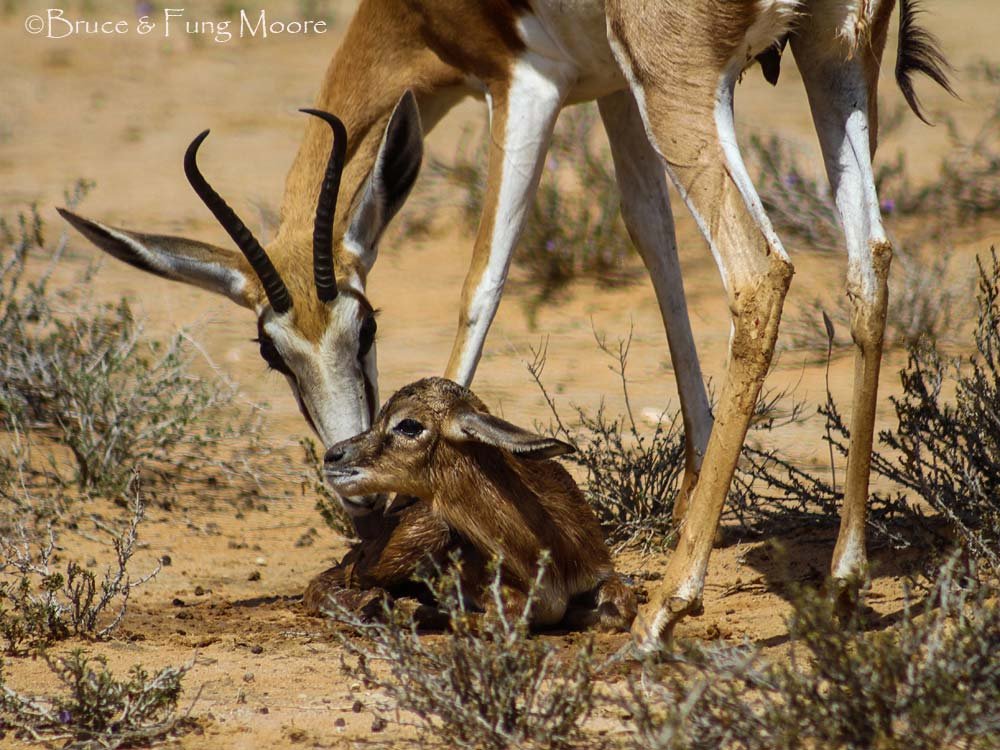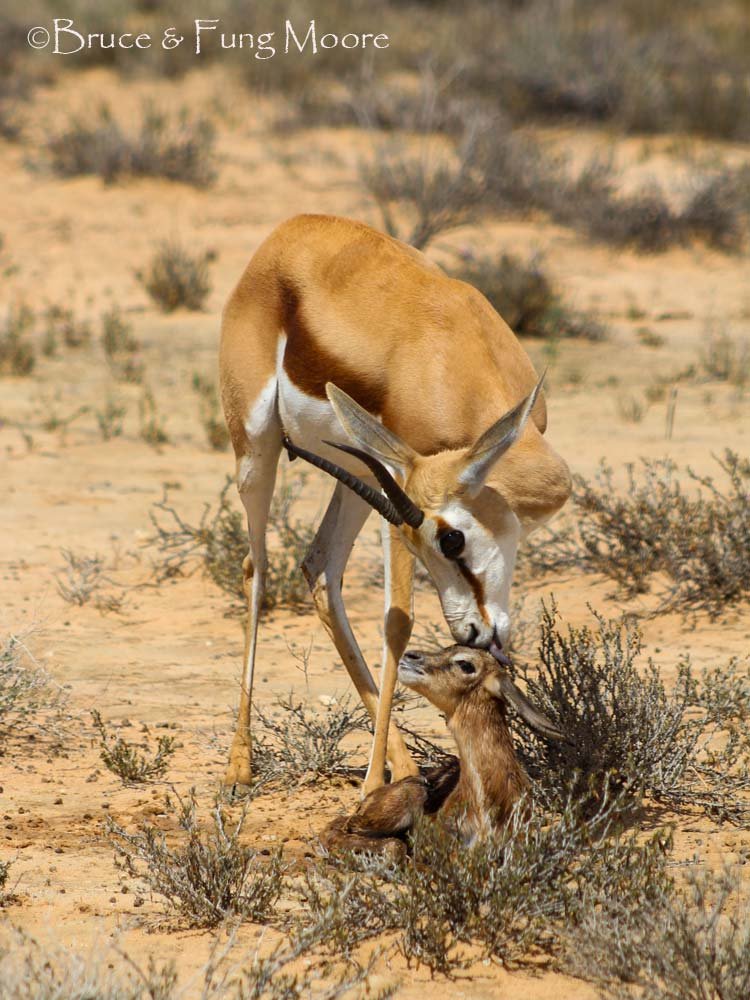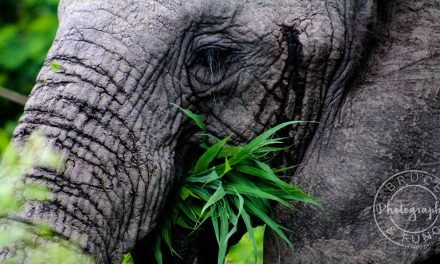SPRINGBOK BIRTH IN THE KALAHARI
Springbok are the most common antelope in Kgalagadi Transfrontier Park (Kgalagadi means “The Place of Thirst”), which is located in the Kalahari Desert where South Africa, Botswana and Namibia meet. This magnificent national park is the best place to witness the birth of this widespread grazer for a very simple reason.
RIGHT PLACE, RIGHT TIME
We were lucky to encounter the birth of a springbok, but we knew that this was the right time period. We had learned that this occurs mid-to-late December, so we were looking out for newly-dropped babies.
We were also in the right place, since the only flat grazing terrain is along the roadside in this park. The two main roads in Kgalagadi follow two dry river beds – the Auob and the Nossob – which the springbok live in. They avoid the red dunes that rise ~100 meters or so to the side of the road, preferring to spend their time where the food and water are.
Just like the zebra and wildebeest of the Serengeti, they give birth en masse over a short period of time and at a certain time of day. Being the most common prey in the area and since the young are virtually helpless for their first few hours, the mothers drop their young around 8 or 9 am, which is just after the lions, leopards and hyenas have retired for the day. The cheetahs and jackals are still a threat as they hunt during the day. But by giving birth in the morning, the young have a few hours to build their strength before most of the predators emerge late at dusk.
We spotted a single newborn lying down, motionless and knew that there should be more. It was the first one we had seen in five days, so it signalled to us that the mass birthing event was commencing. Mothers leave their young alone soon after birth. They continue feeding close enough to watch, but not so close as to draw attention.
Sure enough, shortly after that encounter we noticed a female with a head and front hooves emerging from her back end. It was feeding by the road and moving around unperturbed. Around fifteen minutes later, with barely a pause, the female pushed out the newborn, which fell to the ground.
While keeping vigilant, the mother licked it clean and then lay with it for only a few minutes. Then, when the newborn began trying to stand, the mother stood over it, watching as it tried unsuccessfully to get up, before moving off. Perhaps the trying to stand is a signal that the young is stable and strong enough to leave alone. Without the mother close, it must instinctively know to stay motionless. If any jackals of cheetah see it, it will be a welcome easy meal. Many of the newborns fall prey, but enough survive to keep their numbers strong.
Thus a new life begins in this unforgiving landscape of extreme seasonal temperatures, little water, sparse food and many predators. Good luck little one!
MORE SOUTH AFRICAN CONTENT
Kgalagadi Pt.2: Kalahari Dreaming
The Kgalagadi Transfrontier Park: Our Complete Guide
Springbok Birth in the Kalahari
Ellie Etiquette: Useful Tips for Viewing Elephants in Kruger (and Elsewhere}
Mokala: The Best National Park in South Africa That You Never Heard Of

